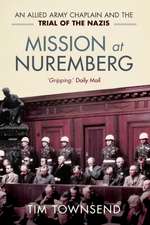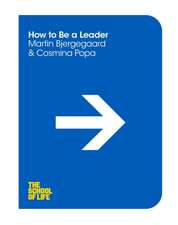Choosing the Tory Leader: Conservative Party Leadership Elections from Heath to Cameron
Autor Timothy Heppellen Limba Engleză Hardback – 18 dec 2007
Preț: 714.57 lei
Preț vechi: 1027.71 lei
-30% Nou
Puncte Express: 1072
Preț estimativ în valută:
136.73€ • 143.52$ • 113.49£
136.73€ • 143.52$ • 113.49£
Carte tipărită la comandă
Livrare economică 11-25 aprilie
Preluare comenzi: 021 569.72.76
Specificații
ISBN-13: 9781845114862
ISBN-10: 1845114868
Pagini: 272
Dimensiuni: 138 x 216 x 28 mm
Greutate: 0.48 kg
Editura: Bloomsbury Publishing
Colecția I.B.Tauris
Locul publicării:London, United Kingdom
ISBN-10: 1845114868
Pagini: 272
Dimensiuni: 138 x 216 x 28 mm
Greutate: 0.48 kg
Editura: Bloomsbury Publishing
Colecția I.B.Tauris
Locul publicării:London, United Kingdom
Notă biografică
Timothy Heppell is Senior Lecturer in British Politics at the University of Huddersfield.
Cuprins
Table of Contents1 Introduction2 The War of the Macmillan Succession: The Catalyst for Electing the Party Leader2.1 The Resignation of Harold Macmillan2.2 The Lack of an Agreed Successor2.3 Bias in the Customary Processes of Consultation?2.4 The Outmanoeuvring of Butler 2.5 The Customary Processes in Disrepute: A Failure of Process and Outcome2.6 Conclusion3 Edward Heath: The First Democratic Leader of the Conservative Party3.1 The Resignation of Alec Douglas-Home3.2 Three Candidates Emerge3.3 How and why did Edward Heath win?3.4 Conclusion4 The Peasants Revolt? The Election of Margaret Thatcher 4.1 The Refusal of Edward Heath to Resign4.2 The Challenge of Margaret Thatcher4.3 The Ballots: Rejecting Heath and Electing Thatcher 4.4 Explaining the Election of Margaret Thatcher4.4.1 The Influence of Personality: The Anti-Heath interpretation4.4.2 The Influence of Ideas: The Ideological Explanation4.5 Conclusion5 Treachery with a Smile on its Face: The Downfall of Margaret Thatcher5.1 The Lightweight Challenge of Anthony Meyer5.2 The Heavyweight Challenge of Michael Heseltine5.3 The Thatcher versus Heseltine Ballot5.4 The Resignation of Margaret Thatcher5.5 The Default Victory of John Major5.6 Why Thatcher lost and Major triumphed5.7 Conclusion6 Put Up or Shut Up: John Redwood Challenges John Major6.1 The Evolution of the Put Up or Shut Up strategy6.2. The Implementation of the Put Up or Shut Up strategy6.3 The Validity of the Put Up or Shut Up strategy6.3.1 The Vote of Confidence Thesis6.3.2 Another Default Major Victory6.4 Conclusion7 You Cannot be Serious: The Election of William Hague7.1 The Resignation of John Major7.2 Profiling the Multiple Candidates7.3 Evaluating the Multiple Ballots7.4. Identifying the Multiple Legitimacy Problems of Hague7.5 Conclusion8 The Quiet Man Emerges: The Election of Iain Duncan-Smith8.1 The Resignation of William Hague8.2 New Leadership Election, New Leadership Election Procedures8.3 The Candidates: Two Heavyweights, Three Lightweights8.4 The Parliamentary Ballots8.5 The Party Membership Ballot8.6 A Failure of Process and a Flawed Outcome8.7 Conclusion9 Back to the Future: Michael Howard becomes Conservative Party Leader9.1 The Credibility Gap: The Limitations of Iain Duncan-Smith9.2 The Procedural Dilemma9.3 The Brutal Execution of Iain Duncan-Smith9.4 The Unopposed Coronation of Michael Howard 9.5 Conclusion10 The Triumph of the Modernizers: The Election of David Cameron10.1 The Prolonged Resignation of Michael Howard10.2 Four Candidates Emerge10.3 The Parliamentary Ballots10.4 The Party Membership Ballot10.5 Explaining the Modernizers Triumph10.6 Conclusion









